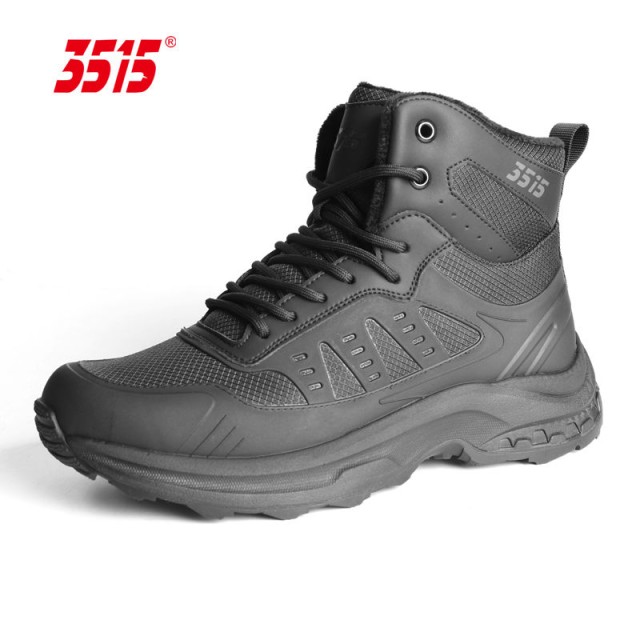Every year, thousands of workplace injuries stem from inadequate foot protection—a preventable issue that costs both employees and employers. This guide transforms hazard awareness into actionable footwear selection, helping you match verified safety features to real-world risks.
Understanding Workplace Hazards
Common Foot-Related Risks in Industrial Environments
Workplace foot injuries typically fall into three categories:
- Impact injuries from falling objects (e.g., tools, machinery parts)
- Penetration wounds caused by nails, glass shards, or metal scraps
- Environmental exposures like chemical spills, extreme temperatures, or electrical currents
Research shows that over 60% of foot injuries occur when workers wear non-compliant shoes, underscoring the need for proper hazard alignment.
How to Conduct a Workplace Hazard Audit
Follow this 4-step assessment to identify risks:
- Observe task workflows: Note areas where employees handle heavy objects or sharp materials.
- Review incident reports: Identify recurring injury patterns (e.g., slips in wet areas).
- Consult safety data sheets: Highlight chemical or thermal exposures.
- Map high-risk zones: Mark areas with electrical equipment or uneven surfaces.
Pro Tip: Involve employees in audits—they often spot overlooked dangers like fatigued flooring in packaging zones.
Safety Footwear Features Decoded
Decoding Safety Standards (ASTM/ISO)
Safety labels aren’t marketing fluff. Here’s what key symbols mean:
- ASTM F2413-18 PR (Puncture-Resistant): Boots with a metal/compound plate blocking sharp objects (denoted by a green triangle with ‘R’).
- EH (Electrical Hazard): Rubber soles that reduce shock risks up to 18,000 volts.
- SD (Static Dissipative): Discharges static electricity in flammable environments.
Did you know? Puncture-resistant boots reduce injury rates by nearly 70% in demolition sites, per OSHA field studies.
Matching Footwear Attributes to Specific Threats
| Hazard Type | Solution Feature | Example Scenarios |
|---|---|---|
| Rolling objects | Steel/composite toe caps | Warehouses with pallet jacks |
| Slippery surfaces | Oil-resistant treads | Food processing plants |
| Acid exposure | Neoprene/Nitrile uppers | Battery manufacturing |
Case in point: Chemical-resistant boots with sealed seams prevented 92% of acid burns in a Texas refinery after implementation.
Real-World Scenarios and Solutions
Case Study: Preventing Slips in Food Processing Plants
A poultry facility reduced slip-related incidents by 80% after switching to:
- Non-slip soles with micro-grooves for wet conditions
- Waterproof membranes to prevent absorption of biological fluids
- Slip-resistant ratings (ASTM F2913 SATRA TM144) verified via incline testing
Case Study: Mitigating Electrical Hazards in Construction
After two near-miss incidents, a solar panel installer mandated:
- EH-rated boots with dielectric insoles
- Metatarsal guards for rooftop tool drops
- High-traction lugs for angled surfaces
Post-intervention data showed zero electrical injuries over 18 months.
Ready to Equip Your Team with Verified Protection?
3515 partners with distributors and safety managers to deliver hazard-specific footwear—from anti-static boots for pharmaceutical labs to insulated soles for Arctic oil rigs. [Contact our specialists] to audit your needs and deploy bulk solutions that cut injury rates.
Because safety isn’t just about compliance—it’s about ensuring everyone goes home unharmed.
Products You Might Be Looking For:
View steel toe work boots for impact protection
Explore customizable safety footwear for workplace hazards
Related Products
- Wholesale Customizable Suede Safety Boots - Puncture-Proof with Velcro Closure
- Wholesale Durable Camo Canvas Shoes with High-Traction Rubber Soles
- Puncture-Resistant Velcro Safety Boots for Wholesale & Custom Manufacturing
- Customizable Anti-Smash Safety Boots for Wholesale & Private Label Manufacturing
- Wholesale Safety Footwear Manufacturer for Bulk & Custom OEM Orders
Related Articles
- Work Boots vs. Western Boots: How to Choose the Right Footwear for Labor Safety
- How Safety Work Boots Engineer Protection: Features and Standards for Targeted Hazard Mitigation
- How to Choose Work Boots That Match Your Job Demands and Safety Needs
- How to Choose Work Boots That Match Your Job's Safety Demands
- How to Choose Work Boots That Balance Safety, Comfort, and Durability for Your Job



















